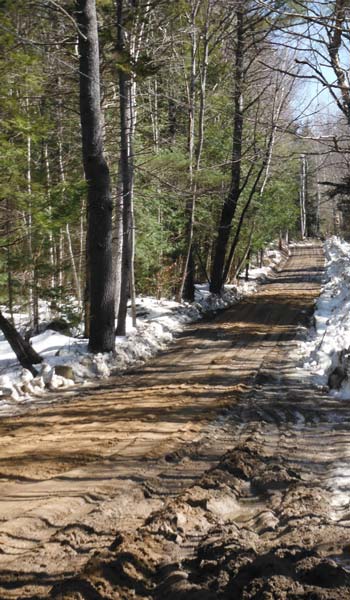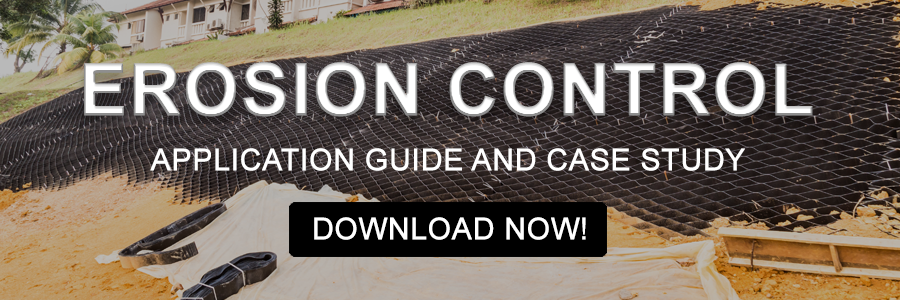The Benefits of Cellular Confinement in Different Erosion Control Situations
- Home
- Team EJP Blog
- The Benefits of Cellular Confinement in Different Erosion Control Situations
- Apr 18, 2016 9:40:48 PM
- Everett J. Prescott
With the current focus on environmental stewardship and green construction, many companies and municipalities are looking at ways they can reduce stormwater runoff from their networks and facilities. One big area that is a concern with stormwater is paving. Because pavement covers a large area and prevents the rainwater from soaking into the ground, it causes some serious problems with storm sewers and erosion. But if ground is left unpaved, either as turf or as a gravel road or lot, it can quickly become damaged, rutted and muddy, causing more problems. Cellular confinement systems provide an excellent opportunity to combine storm water infiltration with a stable driving and parking system. Let's take a look in what situations cellular confinement systems work best:
Load Support
When you need to construct roads that allow water infiltration but a traditional roadway is too difficult or environmentally destructive to build, a cellular confinement system can provide excellent results. The system distributes the weight of any heavy vehicles passing over the entire grid, making it a good choice for weak soils. It also supports the surface soils from erosion and rutting, making it much easier to maintain.
Slope Protection
Slopes can be prone to a lot of erosion and need special protection to maintain the soil's position. In landfills, wastewater containment basins and stormwater collection basins, slope protection is vital to maintaining the ecosystem. Cellular confinement systems stabilizes the slope and maintains the soil while reducing land space and construction costs because slopes can follow a sharper angle.
Shoreline Protection
Doing work in New Jersey with a 1977 @ManitowocCo crane. #HDPE
A photo posted by Everett J. Prescott Inc. (@teamejprescott) on
The flow of water, wave action and wind that is common to shoreline sites can be very destructive, causing significant erosion of the shoreline and contaminating otherwise clean bodies of water. A cellular confinement system helps keep the shoreline in place, preventing erosion from water flow and wind while retaining gravel and sand in place. They can also be anchored to prevent the grid itself from moving in the water and waves.
Channel Protection
Water channels, especially those that are only intermittently wet, can create serious erosion and bank cutting problems. Because these mechanisms tend to be most active when soil is damp and at its weakest, protecting the channel makes a big difference in water quality downstream and safety where banks may be undercut. Cellular confinement can deal with water speeds up to 30 feet per second, preventing these problems.
Erosion Control

When a project requires significant earthmoving and grading to get the job done, erosion becomes a serious problem. Because the soil surface across much of the site is exposed, it's vulnerable to rain and wind erosion. By installing a cellular confinement system, you can break the wind's hold on soil at ground level while the cells actively prevent water from running off with the soil.
Vegetated Retaining Walls
When you're dealing with poor base conditions, a vegetated retaining wall is one of the best ways to avoid problems down the road. But how do you keep everything in place while construction is ongoing and vegetation is becoming established? A cellular confinement system provides excellent support for soil and vegetation while it's becoming established and can remain safely in the soil for decades to come.
Summary
As you can see, cellular confinement systems have exceptional possibilities that need to be considered, along with your location's particular needs. As a leader in stormwater mitigation approaches, we've helped a variety of institutions, businesses, municipalities and organizations create a better solution for each situation. In fact, we have created an Erosion Control Application Guide and Case Study that is now available for download below.








